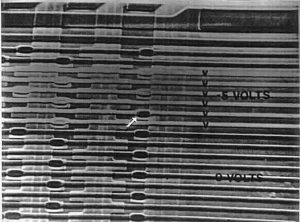Read Chip PIC18F4455 Eeprom
Read Chip PIC18F4455 memory include flash and eeprom, decrypt the locked program and data out from the memory, then copy the firmware to other blank MCU which will provide the same functions as original microcontroller;

Read Chip PIC18F4455 memory include flash and eeprom, decrypt the locked program and data out from the memory
Devices in the PIC18F4455 family incorporate a different oscillator and microcontroller clock system than previous PIC18F devices. The addition of the USB module, with its unique requirements for a stable clock source, make it necessary to provide a separate clock source that is compliant with both USB low-speed and full-speed specifications.
To accommodate these requirements, PIC18F4455 devices include a new clock branch to provide a 48 MHz clock for full-speed USB operation. Since it is driven from the primary clock source, an additional system of prescalers and postscalers has been added to accommodate a wide range of oscillator frequencies..
Other oscillator features used in PIC18 enhanced microcontrollers, such as the internal oscillator block and clock switching, remain the same. They are discussed later in this chapter.
The operation of the oscillator in PIC18F4455 devices is controlled through two Configuration registers and two control registers. Configuration registers, CONFIG1L and CONFIG1H, select the oscillator mode and USB prescaler/postscaler options.
As Configuration bits, these are set when the device is programmed and left in that configuration until the device is reprogrammed. The OSCCON register (Register 2-2) selects the Active Clock mode; it is primarily used in controlling clock switching in power-managed modes by read MCU program. Its use is discussed in Section 2.4.1 “Oscillator Control Register”.
The OSCTUNE register (Register 2-1) is used to trim the INTRC frequency source, as well as select the low-frequency clock source that drives several special features. PIC18F4455 devices can be operated in twelve distinct oscillator modes. In contrast with previous PIC18 enhanced microcontrollers, four of these modes involve the use of two oscillator types at once. Users can program the FOSC3:FOSC0 Configuration bits to select one of these modes.

